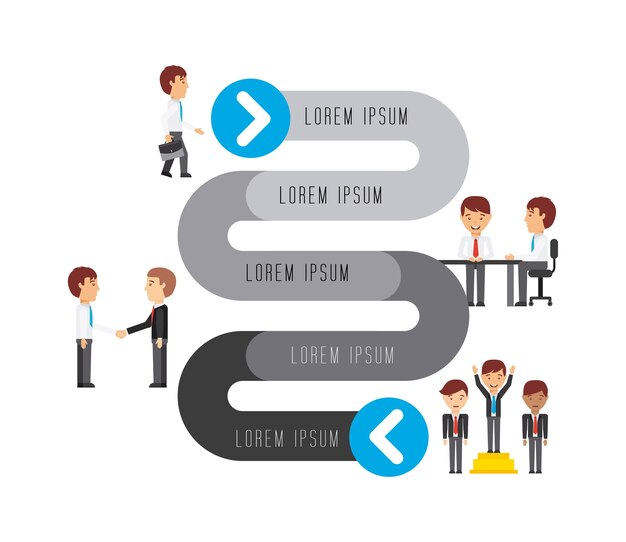Secure Your Web Apps: OAuth 2.0 Tutorial for US Developers

Securing your web applications with OAuth 2.0 involves implementing a robust authorization framework that manages user access and protects sensitive data, ensuring compliance with security standards and providing a seamless user experience for developers in the US.
Worried about the security of your web applications? The solution might be simpler than you think. Dive into this practical tutorial on Securing Your Web Applications with OAuth 2.0: A Practical Tutorial for Developers in the US, designed to help you protect your users’ data and ensure a safer online experience.
Understanding OAuth 2.0: An Overview
OAuth 2.0 is an authorization framework that enables secure delegated access to server resources on behalf of a resource owner. It focuses on client developer simplicity while providing specific authorization flows for web applications, desktop applications, and mobile phones.
Unlike its predecessor, OAuth 1.0, OAuth 2.0 is not an extension of the earlier protocol. It is an entirely different protocol designed with mobile applications in mind and has been widely adopted for securing APIs and delegating access to user accounts across various platforms.
Key Concepts in OAuth 2.0
To effectively implement OAuth 2.0, understanding its core components is essential. These include the resource owner, client, resource server, and authorization server. Each plays a crucial role in the authorization process.
- Resource Owner: The entity that grants access to protected resources. This is typically the end-user.
- Client: An application making requests on behalf of the resource owner.
- Resource Server: The server hosting the protected resources accessible only with the right authorization.
- Authorization Server: The server that issues access tokens after successfully authenticating the resource owner and obtaining authorization.

In summary, OAuth 2.0 offers a streamlined approach to authorization, providing developers with the tools to create secure and user-friendly applications. Its widespread adoption and flexibility make it a must-know for any developer focused on web application security.
Setting Up Your OAuth 2.0 Environment
Before diving into the code, setting up your development environment is crucial. This involves choosing the right libraries and tools, configuring your application, and preparing your server to handle OAuth 2.0 requests. A well-configured environment can save you headaches down the line.
For developers in the US, there are numerous libraries and frameworks to choose from. Popular options include Spring Security OAuth for Java, DotNetOpenAuth for .NET, and various Python libraries like OAuthlib and Requests-OAuthlib. Selecting the right tool depends on your tech stack and project requirements.
Choosing the Right Libraries and Tools
Different programming languages offer various libraries to help streamline the OAuth 2.0 implementation. Consider the following when making your choice:
- Community Support: Opt for libraries with active communities for easier troubleshooting and access to resources.
- Documentation: Ensure the library has comprehensive documentation for smooth integration and usage.
- Security Audits: Check if the library has undergone security audits to mitigate potential vulnerabilities.
Once you’ve selected your tools, configure your application to communicate with the authorization server. This typically involves registering your application with the authorization server to obtain a client ID and client secret. Keep these credentials safe, as they are essential for authenticating your application.
In essence, setting up your OAuth 2.0 environment is a critical step towards building secure web applications. By selecting the right tools and carefully configuring your application, you can ensure a smooth and secure authorization process.
Implementing the Authorization Code Grant Flow
The Authorization Code Grant is one of the most common and secure OAuth 2.0 flows, especially suited for web applications. It involves several steps: redirecting the user to the authorization server, obtaining an authorization code, and exchanging it for an access token.
This flow is designed to protect user credentials by ensuring that the client application never directly handles the resource owner’s username and password. Instead, it uses an intermediary authorization code to obtain an access token.

Step-by-Step Implementation
Implementing the Authorization Code Grant flow involves several key steps. Each step needs careful attention to ensure the security and integrity of the process.
- Redirect to Authorization Server: The client redirects the user to the authorization server, including the client ID, redirect URI, and requested scopes.
- User Authorization: The user authenticates with the authorization server and grants permission to the client.
- Authorization Code Issuance: The authorization server issues an authorization code to the client.
- Token Exchange: The client exchanges the authorization code for an access token by authenticating with the authorization server.
- Access Protected Resources: The client uses the access token to access the protected resources on the resource server.
By following these steps carefully, developers can implement a secure and reliable Authorization Code Grant flow. This ensures that user credentials remain protected, and the application can securely access the resources it needs.
Securing Your Application: Best Practices
Securing your application with OAuth 2.0 goes beyond just implementing the basic flows. Best practices include validating redirect URIs, implementing token revocation, and regularly auditing your security measures to protect against vulnerabilities. Security should be an ongoing process, not just a one-time setup.
Developers in the US must adhere to various security standards and regulations, such as GDPR (if processing EU citizens’ data) and CCPA (California Consumer Privacy Act). These regulations mandate specific data protection measures that must be integrated into your OAuth 2.0 implementation.
Essential Security Measures
To enhance the security of your OAuth 2.0 implementation, consider these essential measures:
- Validate Redirect URIs: Ensure that redirect URIs are properly validated to prevent authorization code interception.
- Implement Token Revocation: Provide a mechanism for users to revoke access tokens, especially if their accounts are compromised.
- Use HTTPS: Always use HTTPS to encrypt all communication between the client, authorization server, and resource server.
Regularly auditing your security practices and staying updated with the latest security advisories can help you identify and address potential vulnerabilities. Security is a continuous effort that requires constant vigilance.
Handling Tokens: Storage and Refreshing
Properly handling tokens is critical for maintaining the security and functionality of your OAuth 2.0 implementation. This includes securely storing access and refresh tokens, implementing token refreshing, and protecting against token theft. Token management is a key aspect of OAuth 2.0 security.
Access tokens grant access to protected resources, while refresh tokens are used to obtain new access tokens without requiring the user to re-authorize. Storing these tokens securely is paramount to prevent unauthorized access.
Token Storage Best Practices
When it comes to storing tokens, here are some recommended best practices:
- Encryption: Encrypt tokens before storing them in a database or local storage.
- Secure Storage: Use secure storage mechanisms like hardware security modules (HSMs) or secure enclaves for sensitive tokens.
- Regular Rotation: Implement token rotation to minimize the impact of token theft.
Token refreshing allows you to obtain new access tokens without interrupting the user experience. This is especially useful for long-lived applications that require continuous access to protected resources.
Common Pitfalls and How to Avoid Them
Implementing OAuth 2.0 can be complex, and developers often encounter common pitfalls. These include improper validation of redirect URIs, mishandling of client secrets, and neglecting to implement token revocation. Understanding these issues and how to avoid them is crucial for a secure implementation.
One of the most common mistakes is not properly validating redirect URIs. This can lead to authorization code interception and unauthorized access to user accounts. Always ensure that redirect URIs are whitelisted and validated.
Avoiding Common Mistakes
Here are some common pitfalls and how to avoid them:
- Improper Redirect URI Validation: Always validate redirect URIs to prevent authorization code interception.
- Mishandling Client Secrets: Protect client secrets as you would protect passwords. Never expose them in client-side code.
- Neglecting Token Revocation: Implement token revocation to allow users to revoke access tokens, especially if their accounts are compromised.
By being aware of these common pitfalls and taking proactive measures to avoid them, developers can ensure a more secure and reliable OAuth 2.0 implementation. Regular security audits and staying updated with the latest security advisories can also help mitigate potential risks.
OAuth 2.0 and the Future of Web Security
OAuth 2.0 is not just a current standard but also a cornerstone of future web security. Its flexibility and widespread adoption make it an essential protocol for securing APIs and web applications. As technology evolves, OAuth 2.0 continues to adapt and address emerging security challenges.
Looking ahead, OAuth 2.0 is likely to play an even greater role in securing the Internet of Things (IoT) and microservices architectures. Its ability to delegate access securely makes it well-suited for these environments.
The Evolving Landscape of OAuth 2.0
As the web security landscape evolves, so does OAuth 2.0. Here are some trends and developments to watch:
- Increased Adoption in IoT: OAuth 2.0 is becoming increasingly important for securing IoT devices and services.
- Microservices Security: OAuth 2.0 is a key component in securing microservices architectures.
- Enhanced Security Measures: Ongoing efforts to enhance OAuth 2.0 security, including improved token handling and authentication methods.
| Key Point | Brief Description |
|---|---|
| 🔑 OAuth 2.0 Basics | Understand core concepts like resource owner, client, and authorization server. |
| 🛠️ Environment Setup | Configure your environment with the right libraries and tools. |
| 🛡️ Security Practices | Apply best practices such as validating redirect URIs and token revocation. |
| 🔄 Token Handling | Securely store and refresh tokens to maintain application security. |
Frequently Asked Questions
▼
OAuth 2.0 is an authorization framework that enables secure delegated access to server resources. It’s crucial for protecting user data and ensuring a safer online experience.
▼
The Authorization Code Grant flow involves redirecting the user to the authorization server, obtaining an authorization code, and exchanging it for an access token, ensuring credential protection.
▼
Best practices include validating redirect URIs, implementing token revocation, using HTTPS, and regularly auditing your security measures to protect against vulnerabilities.
▼
Store tokens securely by encrypting them before storing, using secure storage mechanisms, and implementing regular token rotation to minimize the impact of token theft.
▼
Common pitfalls include improper validation of redirect URIs, mishandling of client secrets, and neglecting to implement token revocation. Be sure to address these for a secure implementation.
Conclusion
In conclusion, **Securing Your Web Applications with OAuth 2.0** is essential for developers in the US to protect user data and ensure a safer online experience. By understanding the core concepts, implementing best practices, and avoiding common pitfalls, you can build secure and reliable web applications that users can trust. As the web security landscape evolves, staying updated with the latest security measures and trends will be crucial for maintaining a robust security posture.





